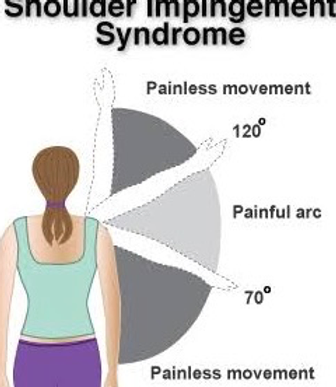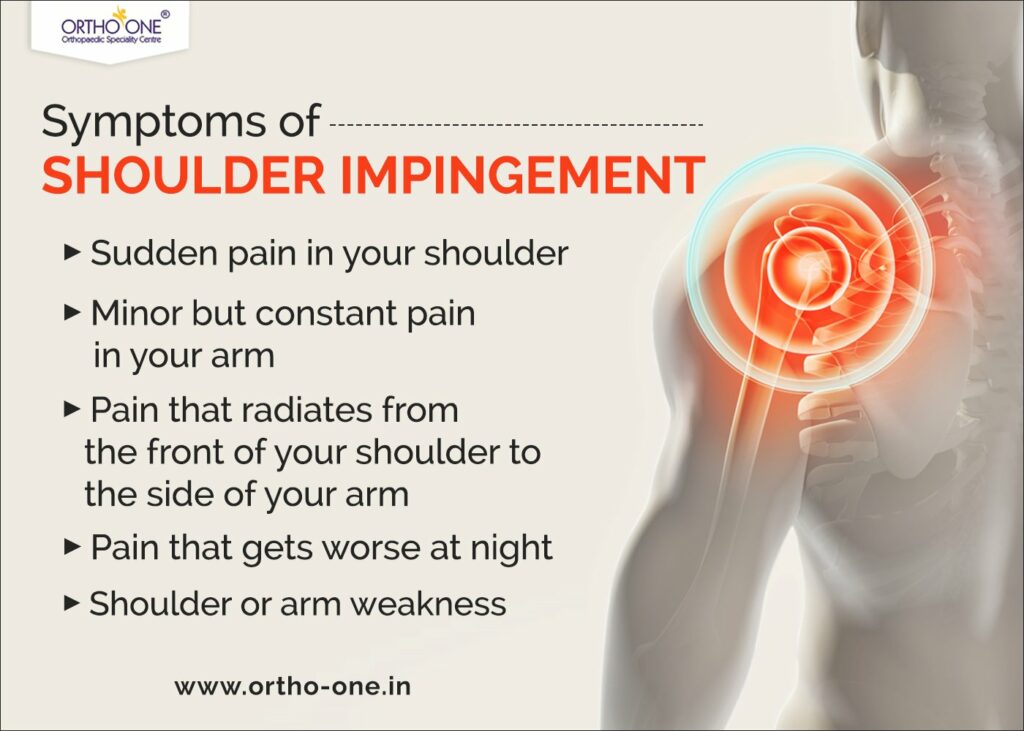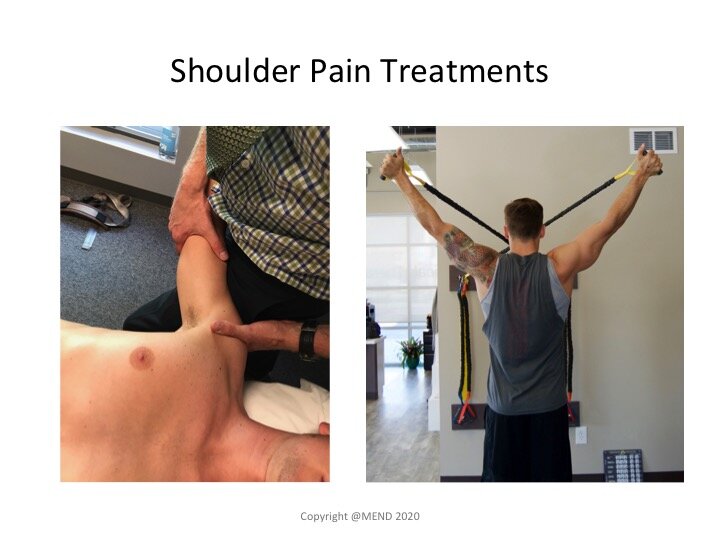Shoulder Impingement: Causes, Symptoms, and Treatment
Commonly known as swimmer’s shoulder, rotator cuff tendinitis, or impingement syndrome, shoulder impingement is a common cause of pain in the shoulder. The name swimmer’s shoulder is because it is most often seen among swimmers, although it can also be seen among athletes whose sporting activities involve the use of shoulders. Shoulder impingement happens when, in… Read More
Top Doctors For Shoulder Impingement: Causes, Symptoms, and Treatment Treatments
Top Hospitals For Shoulder Impingement: Causes, Symptoms, and Treatment Treatments
Shoulder Impingement: Causes, Symptoms, and Treatment
Commonly known as swimmer’s shoulder, rotator cuff tendinitis, or impingement syndrome, shoulder impingement is a common cause of pain in the shoulder. The name swimmer’s shoulder is because it is most often seen among swimmers, although it can also be seen among athletes whose sporting activities involve the use of shoulders. Shoulder impingement happens when, in lifting one’s arm, inside the shoulder; a tendon catches on a nearby bone and tissue. The pain tends to worsen and is consistent as one tries to reach up. The pain is caused as a result of inflammation in the shoulder occurring as a result of the use of the shoulder repetitively. This can be worsened by injuries and aging. Impingement can occur when an individual engages in activities that involve the movement of the arms above the head including swimming and other sports.

The shoulder which comprises many connecting joints, muscles, and tendons is a complicated joint and as such is prone to injuries. The shoulder, which connects the upper arm, shoulder blade, and collarbone, is a complex region. Furthermore, the shoulder is surrounded by the rotator cuff (a group of tendons and muscles) which protects the bones, and the top of the upper arm is held in place by the rotator cuff in the socket of the shoulder.
The rotator cuff which is located under the shoulder’s top, also known as the acromion, allows for the rotating and lifting of the arm, making it possible for the movement of the arm over the head, towards and away from the body. In order to prevent friction in the socket, there is a bursa; this is a fluid-filled sac that cushions the joints of the shoulder. This bursa prevents friction and stickiness when there is a movement of the shoulder because there is a free motion of the tendons.
How does it happen?
When there is an injury or irritation on the rotator cuff, there will be an inflammation of the rotator cuff. The space around the rotator cuff will reduce causing it to rub against the acromion and this will lead to further swelling of the rotator cuff thereby causing the space to narrow further. When the tendons, bones, or muscles push against each other or into the bursa as a result of inflammation, impingement is said to occur. Impingement is caused when the rotator cuff is irritated by increased pressure. This increased pressure is a result of the narrowing of the space between the acromion and the rotator cuff when one lifts the arm.
With the right kind of exercises for the shoulder, within weeks or months, there will be an improvement on an impinging shoulder although, in some occasions, it may be a continuous problem.
Causes of Shoulder Impingement
The most common cause of shoulder impingement is overuse. The chances of having impingement increase when over time, one engages in activities that require the movement of the arm up above the shoulder and towards the back repeatedly. Some of these activities include tennis, softball, baseball, swimming, painting, and construction. The use of the shoulder repetitively can use inflammation of the tendons causing a catch on the upper shoulder bone by the tendons.
Although overuse is the common cause of shoulder impingement, age is a factor to be considered. This is because the longer the time the shoulder is being used, or engaging in activities that involve the use of the shoulder, the greater the chances of having the symptoms.
Symptoms
Pain that is sudden in the shoulder is the major symptom of shoulder impingement. This sudden pain happens when there is a movement of the arm over the head or backward making it difficult for the individual to move the arm.
The shoulder is usually stiff, and there is associated throbbing also. The aching and stiffness of the shoulder happen when at rest, and when the shoulder is in use, the hurting tends to be more.
Other symptoms include:
- Weakness of the shoulder of the arm
- From the shoulder side to the arm’s side, there is pain
- Pain that is minor but constant in the arm
- Pain that worsens at night

Over time, there is a worsening of the symptoms with increasing pains and decreasing strength. When one tries sleeping on the side of the body that is affected, there is a worsening of the pain.
When treatment is not initiated, there may be a tear and wear of the tendons in the rotator cuff causing weakness of the shoulder, difficulty in the use of the shoulder, and a worsening of the pains.
Treatment of Impingement Syndrome
The aim of treating shoulder impingement is to cause pain to reduce and restore the function of the shoulder. The treatments include ice, rest, steroid injections, physical therapy, and anti-inflammatory drugs that can be obtained over the counter.
Home care
When it comes to the treatment of shoulder impingement, rest is very crucial. There is a need to avoid things that will worsen the pains like movements that may worsen the pains, and exercises that are strenuous. Once or twice daily, ice application should be done on the shoulder for twenty minutes. The use of a sling to cause the arm to be immobile should be avoided, even though it is wise not to cause much movement of the shoulder. Using a sling can cause the shoulder to weaken and stiffen more.
Physical therapy
The most important treatment is the physical therapy. There is usually a favorable response to the shoulder impingement to physical therapy. Exercises that are safe and gentle are encouraged to help in strengthening the shoulder’s muscles and also to restore the motion range of that part of the body. In most cases, stretching exercises are done to help improve the range of motion of the shoulder. To improve the muscles of the rotator cuff, strengthening exercises will be done as the pain lessens

Medication
To help reduce pain and inflammation, the use of nonsteroidal anti-inflammatory drugs, such as ibuprofen can be recommended. Steroid injections may be recommended by the doctor if swelling and pain do not reduce when NSAIDs alongside ice and rest are used.
Surgery
Surgery is required when other treatments fail to work. Usually, the surgery is done to cause the space around the rotator cuff to widen. This will allow for free movement without it getting caught or rubbing against a bone. In cases that are rare and advanced, there could be a tear of the rotator cuff thereby necessitating surgery to repair the tear.
References
- https://www.healthline.com/health/shoulder-impingement
- https://www.medicalnewstoday.com/articles/326991
- https://www.nhs.uk/conditions/shoulder-impingement-syndrome/#:~:text=Shoulder%20impingement%20is%20a%20very,the%20top%20of%20your%20arm.
- https://my.clevelandclinic.org/health/diseases/7079-shoulder-impingement-syndrome



















































































































































































